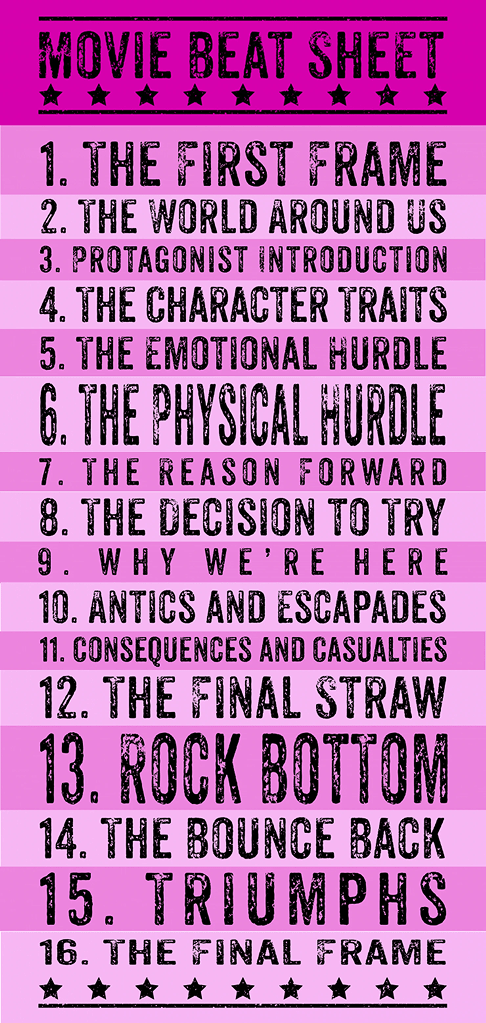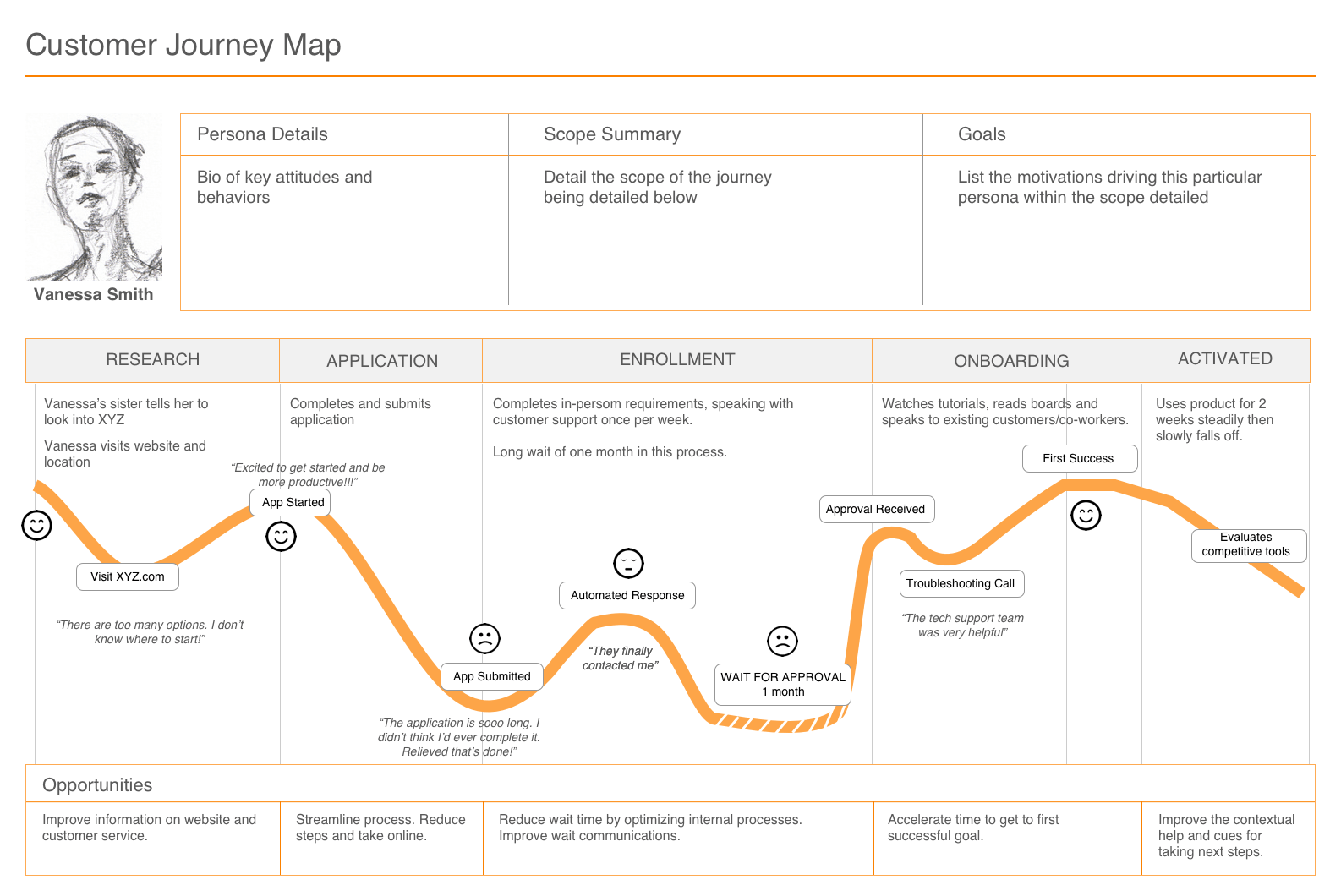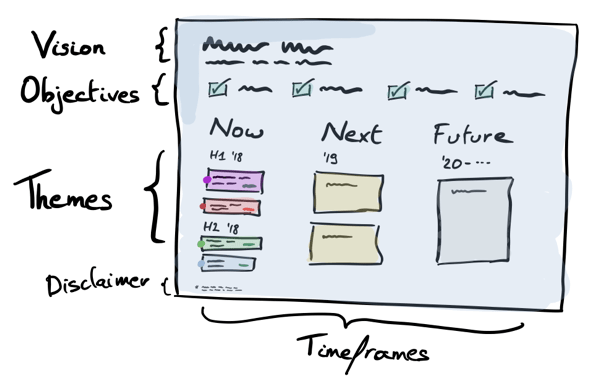
Picture this: You’ve just wrapped up weeks of intense UX research or made a major design breakthrough. You and your team have poured over data, conducted interviews, and synthesised insights. You’ve uncovered a game-changing revelation—something that could transform the User experience and, by extension, the business. But here’s the catch: If you can’t communicate your findings in a way that resonates with stakeholders, all that effort risks fading into the background noise of corporate decision-making.
This is where the art of storytelling comes in. Not just presenting data, but crafting a narrative—one that not only informs but inspires. Because let’s face it, raw numbers and jargon-laden slides won’t move the needle in the boardroom. People don’t just want to know what the insights are—they want to understand WHY they matter and what they mean for the business. And yes, if you do this consistently and effectively over time, you’re positioning yourself not just as a UX researcher or designer, but as a strategic partner at the decision-making table. Why wait to be invited when you can be DOING IT now?
After working with companies ranging from scrappy start-ups to giants like HP, GE, and Dow Jones, I’ve picked up a thing or two about what works—and what doesn’t—when it comes to presenting UX insights. Spoiler alert: It wasn’t always smooth sailing. I’ve had my fair share of missteps, awkward silences, and plenty of push-backs. But those experiences were my greatest teachers, and over the years, I’ve developed a framework that has helped me turn research into influence. So, let’s break it down. Here’s how to turn your UX insights into stories that stick.
Understand your audience: Who are you really talking to?
Imagine walking into a room filled with stakeholders. There’s the product manager who’s laser-focused on features, the engineer who wants to know the “how,” and the executive keen on reducing costs and spending for the year. The way you communicate with each of them has to be different. Why? Because WHAT they care about differs—and so should your story.
When it’s time to present your work, you’re getting visibility and spot-lighting the effort you and your team had poured into for weeks. It’s not to be seen as boasting or showing-off. Rather it’s about making sure that the right people see your work, understand its value, and connect it to what they care about most.
Tailor your story to stakeholder needs:
- Identify your audience: Are you speaking to executives, product managers, designers, or engineers? Each group has its own priorities
- Focus on relevance: Align your insights with their goals—business outcomes for executives, technical feasibility for engineers, and so on
- Research your stakeholders: Just as you would for Users, dig into what motivates your stakeholders. What are their key motivators? What keeps them up at night?
A quick cheat sheet: Stakeholder biases and motivations
Here’s a baseline guide to help you anticipate stakeholder concerns:
| Stakeholder Role | Common Biases | Primary Interests |
| Executives | – Focus on ROI and business goals Impatient for results – Often dismiss design details as secondary | – Strategic alignment with company vision – Revenue growth – Competitive advantage |
| Product Managers | – Prioritises features that align with the roadmap – May undervalue User-centric details | – Meeting product deadlines – User satisfaction metrics – Feature feasibility and delivery |
| Senior Design Leaders, VP of UX/CX | – Focus on high-level strategy rather than granular execution – Bias toward initiatives that elevate team or department visibility – May prioritise innovation over short-term practicality | – Elevating the UX team’s impact and reputation – Alignment with company-wide strategic goals – Creating a cohesive, user-centred vision that drives innovation |
| Marketing Team | – Preference for branding consistency – May prioritise aesthetics over functionality | – Consistent brand representation – Increased User acquisition or engagement |
| Developers/Engineers | – Focused on technical feasibility – May see design changes as adding development effort | – Clear requirements – Minimising technical complexities – Efficiency in implementation |
| Customer Support Team | – May overemphasise fixing current User complaints – Could focus narrowly on existing issues | – Reducing support tickets – Improving customer satisfaction – Clearer workflows for Users |
| Sales Team | – Bias towards features that help close deals – May prioritise short-term gains over long-term strategy | – Features that attract clients – Clear differentiation from competitors – Closing sales faster |
| Legal/Compliance | – Bias towards risk-averse decisions – May undervalue innovation or creativity | – Regulatory adherence – Mitigating legal risks – Maintaining User data privacy and security |
Source: Table inspired by the book Articulating Design Decisions
The key? Frame your insights in their context, not yours. For example, instead of saying, “Users experience high cognitive load,” you might say, “Users feel overwhelmed by too much information on the screen, leading to drop-offs.”
The RIGHT story beats the whole story
Here’s a hard truth: Stakeholders don’t want to hear everything. They don’t need the exhaustive journey of how you arrived at your insights. What they need is the right story—the one that connects the dots between the problem, the insight, and the solution.
“Stories are just data with a soul.”
– Brené Brown
Keep it simple, focused, and outcome-driven
- Start with the problem: What’s the pain point? Why does it matter? Example: “Our onboarding drop-off rate is 60%. What’s causing Users to abandon the process, and how can we fix it?”
- Frame insights as opportunities: Instead of overwhelming stakeholders with details, focus on what they can do with the information. Example: “Simplify product categories and improve filtering to reduce decision fatigue.”
- Provide context: Numbers alone don’t tell a story. Pair data with User quotes or anecdotes to humanise the problem.
Remember, stakeholders are not invested in the process the way UX teams are. They care about results. So, show them the results, not the hours you spent getting there.
Anchoring the story’s problem to the RIGHT business drivers
“UX design leaders who succeed are those who can tie their work directly to one or more of five business drivers: increase revenue, decrease costs, increase new customers, increase customer satisfaction, or increase shareholder value.”
– Jared Spool
One key thing to keep in mind, the story’s problem should to tie into one or more of 5 business drivers. There really is just only 5. Regardless of which role of which function they are in, the higher stakeholders go up the ladder in your org, the business drivers are the engine behind their agenda. If your problem to solve doesn’t fit into one of them, then you are just wasting the their time. When presenting insights to stakeholders, align your UX recommendations with one or more of the following business drivers:
- Increase revenue: Show how solving a User problem can increase conversions or upsells.
- Decrease costs: Reduces expenditure which affects the bottom line. Highlight how improving workflows reduces support time or operational costs. Re-usable Interaction design patterns and Design Systems are good examples of enablers.
- Increase customer base: This can be applied existing or new markets. Emphasise how better onboarding or search functionality attracts and retains new customers.
- Increase customer satisfaction: Impacts business with customer retention & loyalty. Link UX improvements to higher CSAT scores, reviews, or customer loyalty, reduction in churn.
- Increase shareholder value: Increases the brand reputation and ultimately supports the longevity of the company’s financial position in the future. Position UX as a strategic asset that enhances the company’s long-term valuation and competitive edge.
All of the above can be measured and tracked over time– further data you can bring into your boardroom. This framing steers your design discussions to resonate with stakeholders, particularly those in leadership roles who are focused on strategic business goals.
Pro tip: Have a closer look at your org’s KPI. You will find synergy there certainly. They provide a shared language between you, the UX team, and your stakeholders. By tying your UX storytelling to your org’s KPIs, you align your insights with what the business is already tracking and prioritising.
Build a narrative: The story arc that drives action
“The best designers don’t just design—they tell the story of what they’ve designed.”
– Tom Greever
Let’s take a page from Hollywood. Every great story has a beginning, middle, and end (or Acts 1 to 3)— a structure that aligns with how we naturally process information. Beats in storytelling represent the pivotal moments—actions, emotions, or realisations—that propel the narrative forward and keep the audience engaged.

A story beat is a pivotal moment or event in a narrative that advances the plot, reveals character motivations, or shifts the direction of the story, often marking key turning points.
In UX storytelling, these beats spotlight key research insights, the challenges and hurdles, achieving milestone “wins” along the way, marching towards the ultimate outcomes for Users & business.
They create a logical flow, providing the foundation to battle and fix problems – keeping stakeholders thoroughly engaged into the story you’ve weaved.
So why does this work? As humans, we are hard-wired for stories in this format. We consume them daily in the forms of music, theatre, movies, and news—it’s as natural as breathing. Subconsciously it simply flows well when told in this format. In UX storytelling, the story arc can look like this:
- Act 1: The problem (set the stage): Introduce the problem with context and clarity. Build empathy by showing the pain point from the User’s perspective.
- Example beat: Frustrated users “70% of support tickets are about issues Users could solve independently, but they’re frustrated by the poor search functionality.”
- Another beat: business impact ”As a result, support tickets have increased by 30%, driving up operational costs by $500,000 annually. Support teams are overwhelmed with repetitive issues that could easily be resolved if the portal were more intuitive.”
- Closing beat: articulate UX outcome “Empower Users to resolve their issues independently, reducing ticket volume by 40% and improving customer satisfaction by 25%.”
- Act 2: The progress (build momentum): Highlight milestones and progress metrics. Show stakeholders how you are (or will be) solving the problem via key milestones to accomplish.
- Example beat – progress metric: “We developed and tested a prototype of a new search functionality for the portal.”
- Example beat – progress metric: “We piloted a redesigned portal with 3 client teams, and they reported a 25% reduction in time spent searching for answers.”
- Act 3: The solution (aspirational UX outcome): Paint a vivid picture of the desired outcome. Tie it back to business goals and success metrics.
- Example beat: “When we reduce onboarding drop-offs by 40%, we’ll save $500,000 annually and improve customer retention.”
- Closing beat – High Level UX Roadmap: A living timeline document which highlights wins/outcomes instead of fixed features/outputs.

For Act 2, let visuals do the heavy lifting
“People think in stories, not statistics, and it’s easier to relate to a person than to numbers.”
– Daniel H. Pink, To Sell is Human
Show and not only tell—especially when you’re trying to make complex UX insights accessible to busy stakeholders. Ask yourself: What were the failures in your prototypes that led to pivotal design changes? What other insights were gained along the way? What obstacles lie ahead and must be overcome to progress further? These elements are your progress metrics—the milestones in your UX story that deserve the spotlight.
Use visuals to amplify your story:
- Current state customer journey maps: Make pain points and opportunities visible across the User experience.
- Data visualisations: Turn numbers into charts or graphs that are easy to digest.
- Highlight key quotes: Pull in real User voices, use 1st person narrative if possible—like a direct quote or a 30-second video clip—to humanise the data.

Pro Tip: Keep visuals simple. Stakeholders don’t want to decode a complex chart—they want clarity at a glance.
Frame insights as opportunities and solutions
“When you present research, tell a story about what the Users are trying to do—not just what they said.”
– Kim Goodwin
Collaborate from day 1
Engaging stakeholders is never a one-way street. The best presentations feel like conversations, and these conversations are more likely to work in your favour when stakeholders have had visibility into your process from the early stages—or better yet, participated in it. This works because it fosters a sense of co-ownership in the UX work at some level.
Use co-creation techniques
Before you even get to the presentation stage, consider inviting stakeholders (or their team members) to participate in workshops or brainstorming sessions. This approach builds buy-in from the very beginning.
Why it works: Cross-functional workshops during the discovery phase not only speed up information gathering but also build rapport and rally support for tackling the problem.
Remember: UX design is a team sport. By involving colleagues from various functions—even if just tactically—you’re fostering collaboration across the organisation. This shared ownership adds value and eases stakeholder alignment later on.
Make it interactive
When it’s time to present, don’t just deliver a monologue—invite feedback and discussion to make your presentation feel more dynamic and inclusive.
Why it works: These interactive moments not only show that you value stakeholder input but also help you address potential doubts or concerns early on, strengthening your narrative.
Mini Q&A Slots: Include short Q&A breaks (5–6 minutes) after each “Act” in your storytelling structure. This allows stakeholders to raise questions, clarify points, or share their thoughts in real time.
Be Prepared: Anticipate common questions and have clear, concise answers ready. For more complex, time-intensive questions, jot them down and commit to providing follow-up responses later. This keeps your momentum intact without derailing the session.
The final act: A clear path forward
High-level UX roadmap

A high-level roadmap that connects UX insights to strategic business goals is the perfect way to wrap things up. A great roadmap doesn’t just lay out your UX efforts in the future — it connects them to the org’s strategy and paints an inspiring vision for the future. Rather than listing features to produce as outputs, instead outline progress metrics (short-term wins) and success metrics (long-term outcomes). The key ingredients to it are:
- Focus on outcomes, not tasks
- Build the roadmap around measurable outcomes tied to User needs and business goals. Be sure to articulate how we will know when Success metrics are achieved.
- Organise work into themes
- Group efforts by strategic priorities to simplify communication.
- Show progress to build confidence
- Use progress metrics as milestones to demonstrate momentum.
- Present it as a living document
- Maintain flexibility to iterate based on feedback and results.
- End with a call to action
- Outline next steps and invite collaboration.
Why roadmaps matter
A roadmap isn’t just a presentation slide—it’s a shared vision that aligns stakeholders on what success looks like and how to get there. By focusing on outcomes, structuring work into themes, and tying it to strategic goals, you position UX as a driver of measurable business impact.
“A good roadmap tells a story that explains not only where you’re going but why, and how this direction aligns with your business objectives.”
– Product Roadmaps Relaunched
As we wrap up…
Storytelling in UX isn’t just a skill—it’s the glue that holds everything together. It’s what bridges the gap between dry research reports and the decisions that shape the future of your product, your Users, and your org. It’s the difference between presenting findings that get a polite nod and crafting a story that sparks action.
Because when you tailor your story to the people in the room—when you connect the dots between data, design, and the business outcomes that matter to them—you’re not just sharing insights. You’re driving decisions. You’re shaping strategy. You’re solving problems that actually move the needle.
And here’s the kicker: When you do this consistently—when you show up, not just as the “UX person” but as someone who has a seat at the table—you’re not just influencing decisions anymore. You’re a strategic partner. That’s the moment when the magic happens.
So, with this final piece of the UX Research Playbook series, you now have the pathways to plan, execute, and deliver research that doesn’t just inform—it transforms. The framework to tell stories that matter, to solve problems that count.
And no matter where this journey takes you, one thing remains true: Keep questioning. Keep creating. Because the best stories? They’re the ones you haven’t told yet.
Free UX & product strategy community & resources
Ready to keep learning? Read my Substack to either challenge what you think you know, or learn more of what you don’t.
Stay curious – Subscribe.

This was Part 5 (of 5) of the Qualitative UX Research Playbook series.
- View Part 1: Qualitative UX Research Playbook
- View Part 2: Instrumentation & Recruitment – Setting the Stage for Effective User Interviews
- View Part 3: Mastering the Art of User Interviews: Listening to Learn
- View Part 4: From Raw Data to Clarity – Cleaning, Sorting, and Synthesising Insights
Recommended further reading
- Product Roadmaps Relaunched: How to Set Direction While Embracing Uncertainty by C. Todd Lombardo, Bruce McCarthy, Evan Ryan, and Michael Connors
- Articulating Design Decisions: Communicate with Stakeholders, Keep Your Sanity, and Deliver the Best User Experience by Tom Greever
- Designing for the Digital Age by Kim Goodwin
- Strategic UX Research is the Next Big Thing by Jared Spool
- It’s a Great Time To Be a UX Designer by Jared Spool
- How to Build Strategic Influence in 4 Steps by Marina Krutchinsky

